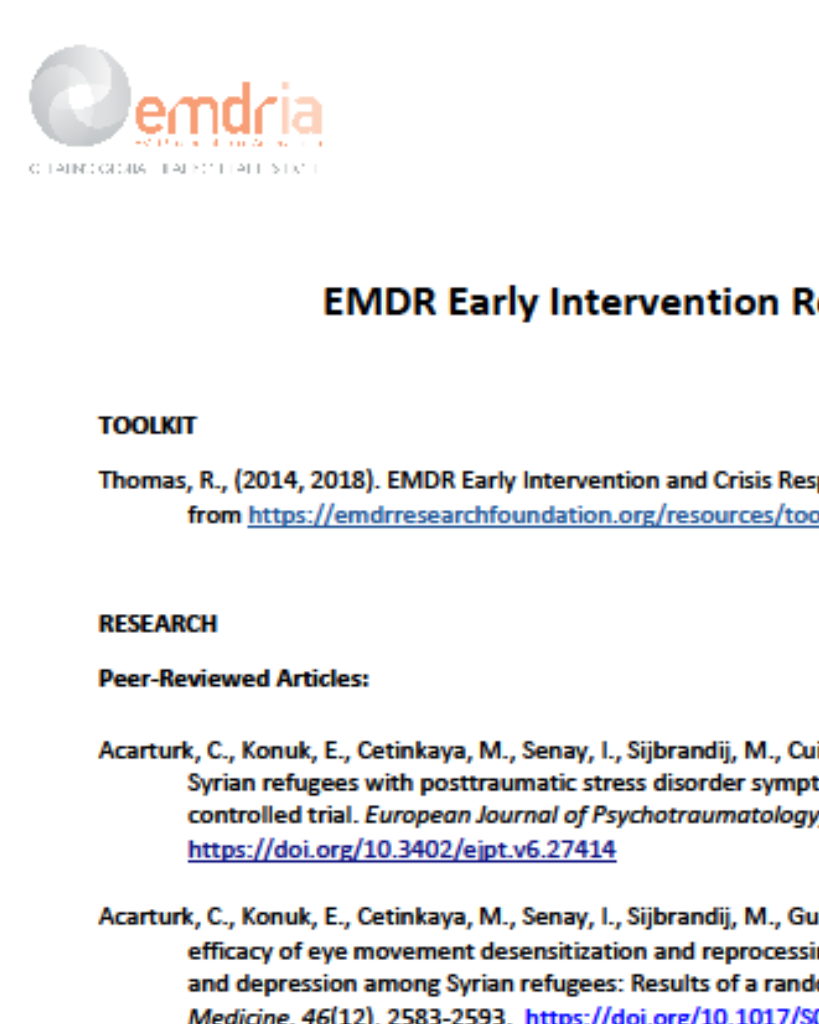The efficacy of eye movement desensitization and reprocessing (EMDR) in individuals diagnosed with either C-PTSD or PTSD
AIP research lacks a distinction in efficacy rates with C-PTSD compared to PTSD complicated by high failure & drop-out rates for C-PTSD.
Dissertation Abstract
“Post-Traumatic Stress Disorder (PTSD) and Complex PTSD (C-PTSD) significantly affect occupational, educational, relational, and personal systems of a significant portion of the general population. Disagreement exists within the clinical and research communities regarding solutions to the significantly higher failure and dropout rates for C-PTSD versus PTSD with similar treatment. In the recent three decades, research on Adaptive Information Processing (AIP) theory and Eye-Movement Desensitization and Reprogramming (EMDR) treatment for PTSD provided significantly higher success rates than other treatments. A concern with AIP research is a lack of distinction in efficacy rates with C-PTSD compared to PTSD. The general problem is the high failure and drop-out rates for treatment in the management of C-PTSD, while the specific problem is the lack of understanding about EMDR efficacy in individuals diagnosed with PTSD and C-PTSD. A causal comparative design with meta-analysis was used to compare selected research articles relating to the treatment of individuals diagnosed with PTSD or C-PTSD using EMDR therapy. Two groups defined by the causal traumas identified as diagnosis type PTSD or C-PTSD while the variable of EMDR treatment efficacy was measured by effect size. Effect size differences were compared using ANOVA and though no significant difference between effect sizes was derived from the study data, results prompted implications into changes in the AIP theory to identify a unique conceptualization of C-PTSD. The study contributed to AIP theory by identifying a clear lack of data and literature addressing specific aspects of C-PTSD in
treatment and theory, promoting an extension to the theory. In addition, a call for changes in treatment of C-PTSD and the overall conceptualization of C-PTSD along with implications for future qualitative and quantitative research may promote a more complete understanding of the AIP Theory and its application to C-PTSD.”
—Description from publisher
Dissertation Access
Open Access
Rowe, T. (2019). The efficacy of eye movement desensitization and reprocessing (EMDR) in individuals diagnosed with either C-PTSD or PTSD. Dissertation Manuscript. Northcentral University. https://search.proquest.com/openview/fc6814696b057674565b9714e9856775/1?pq-origsite=gscholar&cbl=18750&diss=y
Date
November 1, 2019
Creator(s)
Todd Rowe
Topics
Complex Trauma/C-PTSD, PTSD
Practice & Methods
AIP
Extent
24 pages
Publisher
Northcentral University (Michigan)
Rights
Copyright of the dissertation is held by the author.
APA Citation
Rowe, T. (2019). The efficacy of eye movement desensitization and reprocessing (EMDR) in individuals diagnosed with either C-PTSD or PTSD. Dissertation Manuscript. https://search.proquest.com/openview/fc6814696b057674565b9714e9856775/1?pq-origsite=gscholar&cbl=18750&diss=y
Audience
EMDR Therapists, Other Mental Health Professionals
Language
English
Content Type
Thesis/Dissertation
Access Type
External Resource, Open Access





